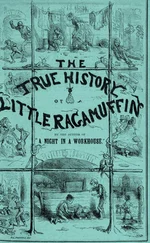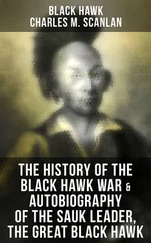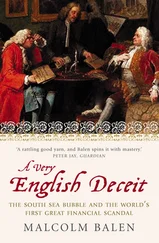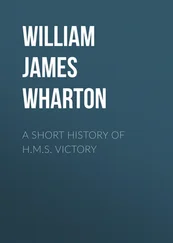The ship, meanwhile, finds itself in danger of being destroyed, but is saved through the simple expedient of a little minor time travel, the first for the series. This episode also introduces Nurse Christine Chapel and her unrequited love for the unreachable Mr. Spock.
“The Enemy Within” gives Shatner a shot at strutting his stuff when a transporter malfunction divides him into two diametrically opposed selves. Believe it or not, this episode first explored on television the much-abused concept of the “evil twin,” and this is perhaps the only time on TV that it was ever explored with any thought or imagination. Hack TV writers reduced the idea to a trivial cliché in the seventies and eighties on countless television shows.
“Mudd’s Women,” one of the three scripts proposed for the second pilot submission, introduces Roger C. Carmel as the rascally space swindler Harry Mudd. This also marks the first time the Enterprise is in dire need of fresh dilithium crystals. Furthermore, Mudd actually gives another character a pleasure drug—a fact overlooked by the network censor!
On October 15, 1966 (two days after “Mudd’s Women”), TV Guide featured a profile of William Shatner. Entitled “No One Ever Upsets The STAR,” it details Shatner’s first taste of real fame.
William Shatner, Star Trek ’s 35-year-old Montreal-born ex-Hollywood holdout, sits in his plush Desilu dressing room force-feeding himself on five pages of rush dialogue. He is interrupted first by a small man bearing a new-style jacket on a hanger, and then an intently solicitous press agent, and then an eager-to-please youth who asks in the manner of a bellhop addressing the man in the presidential suite, “Would you like something cold to drink?”
Shatner appears to love all this attention, and comments on his new attitude, “Before, I always thought that kind of, uh, toadying was beneath human dignity. But for the first time I’m able to see the reason for it. These little attentions do help. It makes life easier for me.” Later he continues, “I’ve gotten great insight into the omnipotence of the series lead. Everybody does his best not to upset the star. It’s an almost unique position few in the entertainment world achieve … it’s like absolute power.”
Shatner then joins Leonard Nimoy, already wearing his famous ears, guest star Robert Walker, Jr., and director Larry Dobkin for a rehearsal just outside his dressing room. Shatner insists on these off-the-set run-throughs, an innovation that earns him the applause of most of the directors. The actor evidently has firm ideas about the show itself, and when an associate producer arrives with late, late script changes, Shatner gets testy. (Later, he persuades Roddenberry to outlaw these last-minute changes.)
Not content just to be the star, Shatner from the beginning would approach Roddenberry with his comments about the script. Later, he presented Gene with a script he himself had written. Roddenberry was impressed—“I caught myself wishing I could write that well. …”—but not inspired to buy the script. Working with such an assertive actor at first seemed ominous, “but it wasn’t so bad. I have never had more intelligent suggestions, and we used all of them,” Roddenberry said.
Shatner took to stardom like a natural from the very first, and in the years since that first season, he has even realized his early dream of writing and directing.
“What Are Little Girls Made Of?” again features two Kirks (Shatner must have loved this!) when he is duplicated, in android form, by Nurse Chapel’s fiancé, Dr. Roger Korby. She’s been searching for him, but he seems to have gone just a little bit ’round the bend, and is intent on taking over the Enterprise and populating the universe with his androids, one of whom, Ruk, is portrayed by Ted Cassidy (Lurch on The Addams Family ). This episode has a strange, eerie quality about it, and writer Robert Bloch, who wrote the novel on which the film Psycho was based, peppers it with arcane references to aspects of H. P. Lovecraft’s mythos. Kirk’s brother George is mentioned in this episode.
“Miri” brings Kirk and crew to a planet remarkably like Earth, where ancient children live long lives until their long-delayed puberty causes them to sicken and die. Kirk is beaten up by children in this episode; McCoy finds a cure for the aging disease before almost succumbing to it himself.
“Dagger of the Mind” involves Kirk’s discovery of the abuses of power at a supposedly humane penal colony. This introduces the Vulcan mind meld, which conveniently serves as a means to avoid a lengthy expository conversation with a mentally deranged character.
“The Corbomite Maneuver” was actually the third episode filmed, as well as being the first one to include McCoy as a character. Here Kirk encounters a massive, threatening spaceship that is not what it seems to be.
The next two broadcasts consisted of a two-parter, “The Menagerie,” which incorporated much of the footage from the first pilot, “The Cage.” Here Spock goes to great lengths to take Captain Pike, crippled in an accident, back to Talos IV so that he can live out his life in a happy illusion created by the Talosians. Through flashbacks, Spock explains his actions to Kirk and the others.
By this point in the series, one thing was crystal clear: Mr. Spock, originally a supporting character, was becoming as popular as the lead, Captain Kirk. At times, Shatner even felt obliged to remind some series scriptwriters that he was the captain; he later acknowledged that there was sometimes friction between him and Leonard, but made certain to indicate that this was a thing of the past: “We went through that fire together and today we are fast friends. Leonard is an honest man and a fine craftsman.” Still, at the time Shatner was so concerned over the situation that he counted his lines in each new script to be certain that he had more than Nimoy. If he didn’t, either more were added for him at his insistence, or some of Nimoy’s lines were cut.
Norman Spinrad once related the story of his visit to the set of the episode he had scripted, “The Doomsday Machine.” He witnessed the director trying to come up with an alternative way for Nimoy to react to Shatner in a scene because for Nimoy to utter a line would have given him one line too many, as far as Shatner was concerned.
But by the end of 1966, Star Trek was already in trouble. NBC was dissatisfied with the Nielsen ratings, and was, as usual, uncertain of how to categorize the series. The show had already generated a highly positive response in the science fiction subculture, of course, and so Roddenberry turned to Harlan Ellison for help. Perhaps if the network knew just how large an audience science fiction fandom represented, it might very well see the show in a new light.
And so, Ellison sent out five thousand letters urging science fiction fans to press NBC with a letter-writing campaign. Dated December 1, 1966, Ellison’s missive bore the letterhead of “The Committee,” an impressive listing of names: Paul Anderson, Robert Bloch, Lester Del Rey, Ellison, Philip Jose Farmer, Frank Herbert, Richard Matheson, Theodore Sturgeon, and A. E. Van Vogt. Thus Ellison, who would later be less than keen on his involvement with Star Trek (“The City on the Edge of Forever” had yet to be filmed), was in fact responsible for the very first letter campaign organized to benefit the series.
This, of course, was in the days when the Nielsen ratings presupposed a bland, all-encompassing uniformity belonging to the “average” TV viewer. With this sort of a priori approach, it is hardly surprising that the appeal of Star Trek did not dovetail with the Nielsen company’s concepts, and hence eluded its comprehension. But in those pre-demographics days, before the variety of the American mind-set was taken into consideration, the Nielsen ratings were the voice of God as far as the networks were concerned. Those were the numbers that determined a show’s advertising value and marketability, as well as its popularity, despite whatever evidence reality had to offer to the contrary.
Читать дальше












